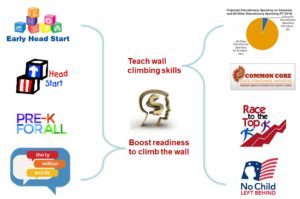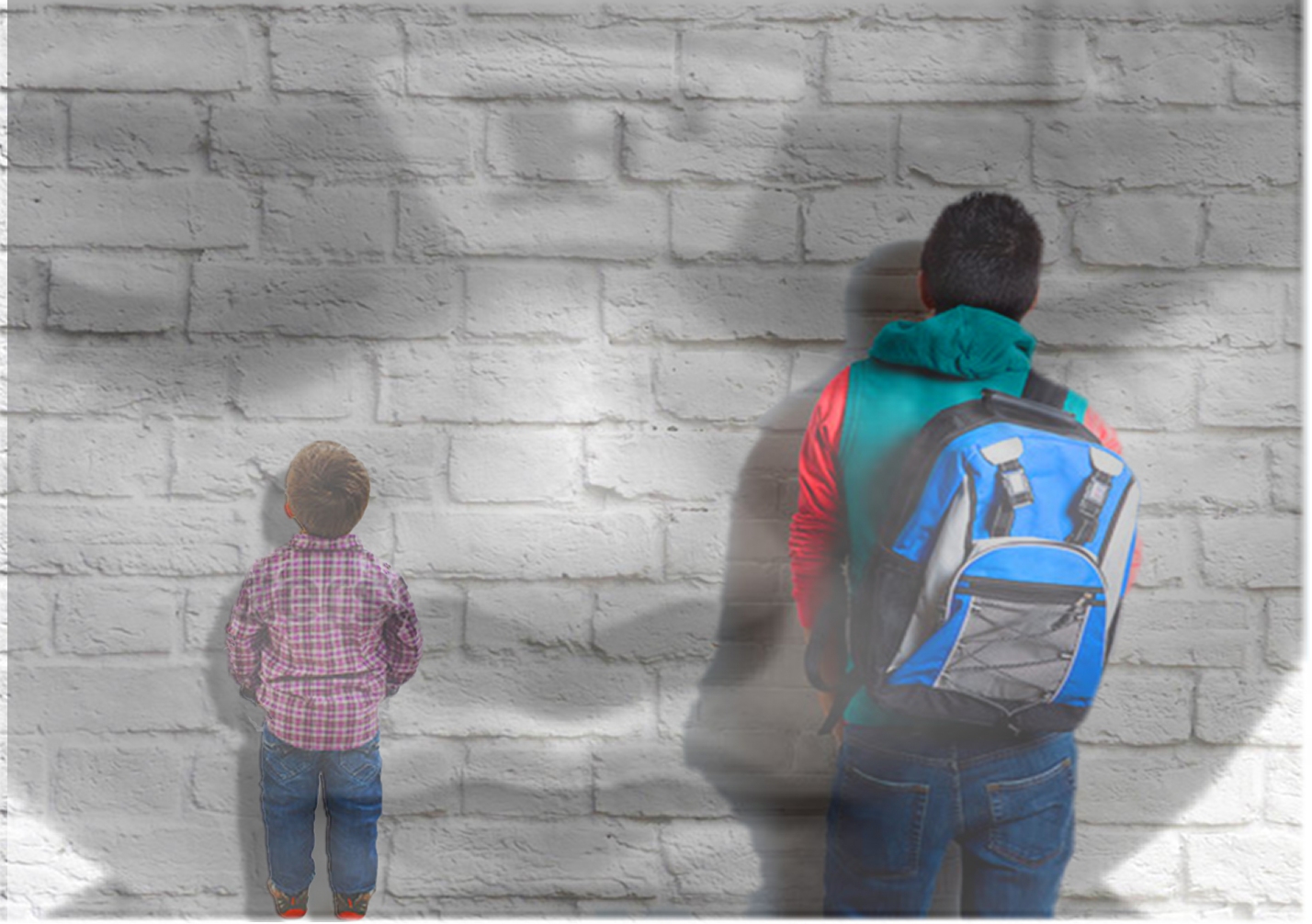Note: See Demo at bottom of page
Convergence
Point 1 – Decades of social and economic research, beginning with the Coleman Report and since including Heckman, (Nobel Prize winner) Rolnick (Ex. V.P. of the FED), Hanushek (Hoover Institute) and many others, and decades of developmental neuroscience research, most notably as compiled by Harvard’s Jack Shonkoff, have converged and coalesced into the modern edu-economic arguments for Universal Pre-K – for the need to BOOST the ‘school readiness’ of children (particularly disadvantaged children) entering the K-12 pipeline. The national scramble, the billions of dollars being spent (including PNC’s “Grow Up Great” and the numerous similar ‘birth to 5’ initiatives) are all powered by the case to improve children’s readiness for the learning challenges that await them in elementary school.

Point 3 – Both #1 and #2 above are different ‘views’ of the same underlying issue. Our efforts to boost readiness are essentially efforts to boost children’s readiness to learn to become good readers. If the children coming out of an ECE program do not learn to read by the end of third grade, then that initiative failed them.
The Metaphor: The Obstacle Course Wall

Becoming a good reader is like climbing the wall of an obstacle course – everything that comes after it depends on getting past it. Reading is the obstacle course wall of elementary education.
It is this wall that defines points 1 and 2. All the energy and money going into Pre-K efforts are attempts to make kids better ready for the challenge of climbing the wall. All initial reading programs are attempts to make kids better wall -climbers before they run out of time (3rd grade pledges).
The assumption underlying Pre-K investments and the design of all reading programs (to date) is that the wall is an immutable object. But what if instead of being a 20 foot wall with handholds and footholds every 5 feet, it was an adjustable height wall that had handholds and footholds that dynamically adapted to the ‘reach’ of each climber? What if, rather than just spending enormous energy trying to ‘ready’ kids for the challenge of climbing the wall, we also LOWERED the wall and made it easier (neurologically more efficient) for kids to climb?
DEMO: Click on any word below (and keep clicking it) to experience the “Magic Ladder” – a new technology that provides learners adaptive help in climbing the wall of reading.
See other examples of Pre-K stories and games: https://mlc.learningstewards.org/master-library-prek/
View/Print a more comprehensive version of this post: https://drive.google.com/file/d/1GCtDx_ie_hytnHQfaOXI-FnjIF6lPm57/view

No comments yet.